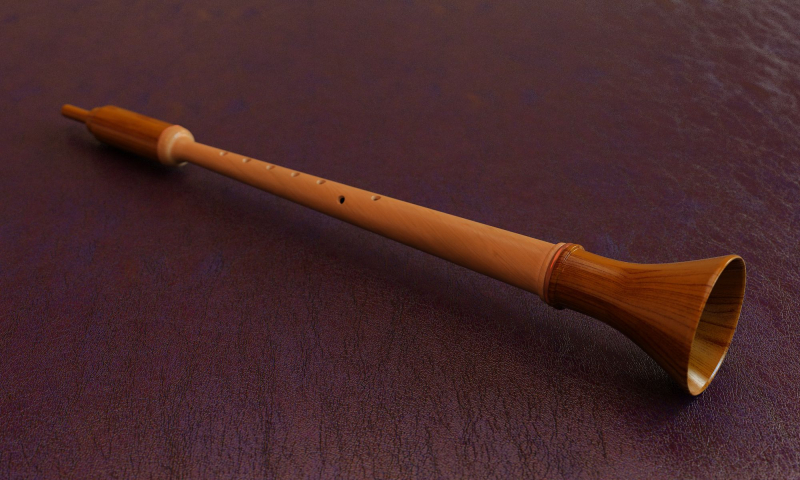Shawm
The conical bore shawm is a double-reed woodwind instrument that has been produced in Europe since the 12th century. The oboe family of related instruments in classical music eventually replaced it after it peaked in prominence during the medieval and Renaissance eras. The Persian sorna, the ancient Greek aulos, and the Armenian duduk are just a few examples of double-reed instruments with a lengthy history in Southern Europe and the East.
The shawm's body, which is often made from a single piece of wood, ends in a bell with a flared end that resembles a trumpet. Shawms were produced in a range of sizes starting in the 16th century, from sopranino to great bass, and a consort built completely of shawms was capable of playing music in four and five parts. Except for the tiniest, all later shawms contain at least one key that allows the compass to be extended downward. The keyword is often concealed by a perforated wooden cover known as the fontanelle. The bassoon-like double reed, made from the same Arundo donax cane used for oboes and bassoons, is inserted directly into a socket at the top of the instrument, or in the larger types, on the end of a metal tube called the bocal. The pirouette, a small wooden attachment with a cavity in the center resembling a thimble, surrounds the lower part of the reed—this provides support for the lips and embouchure.
The player has limited contact with the reed and consequently, limited control over dynamics because only a small portion of the reed extends past the pirouette. The shawm has a piercing, trumpet-like sound that is ideal for outdoor performances thanks to its conical bore and flaring bell as well as the playing style required by the use of a pirouette.















